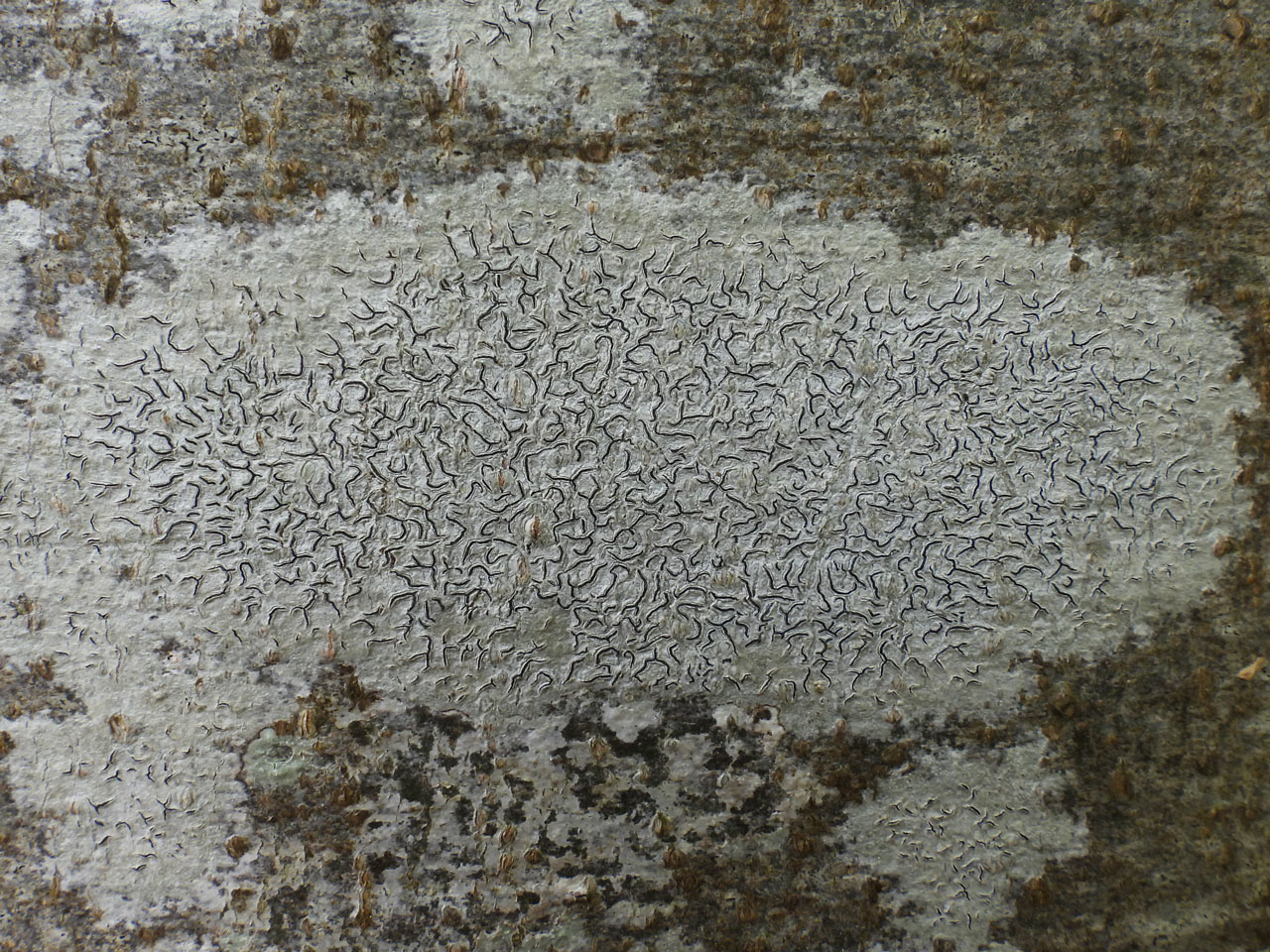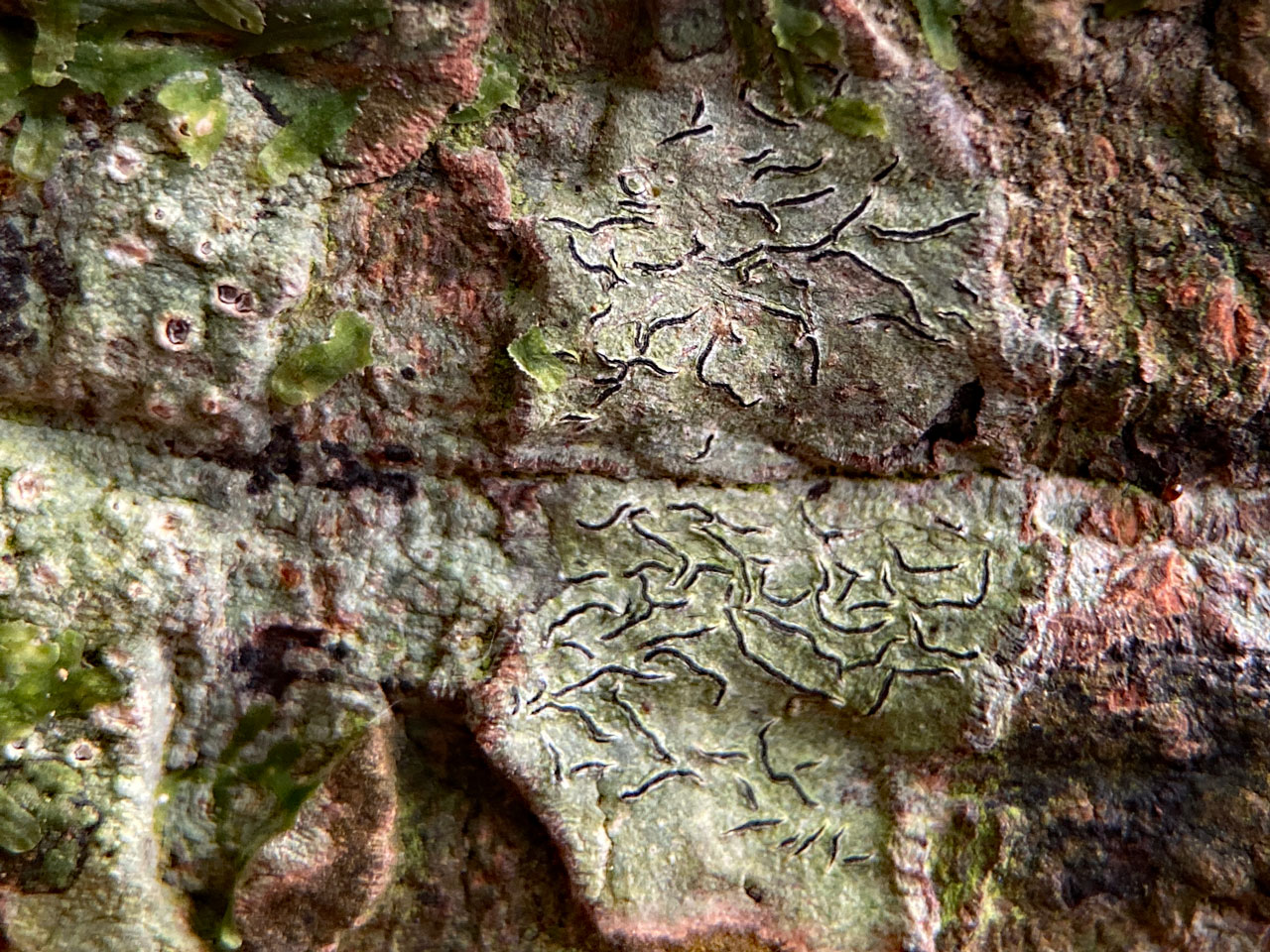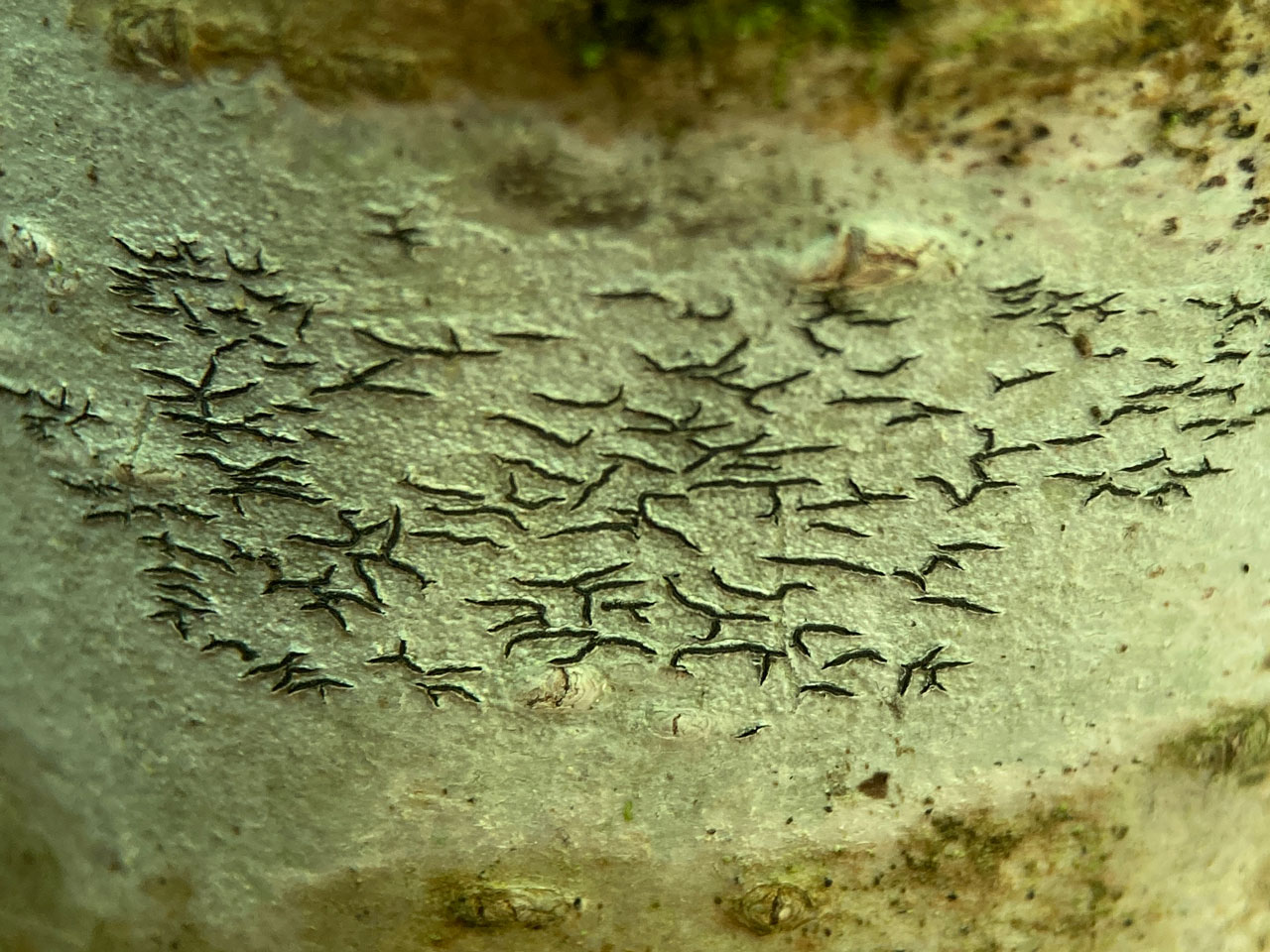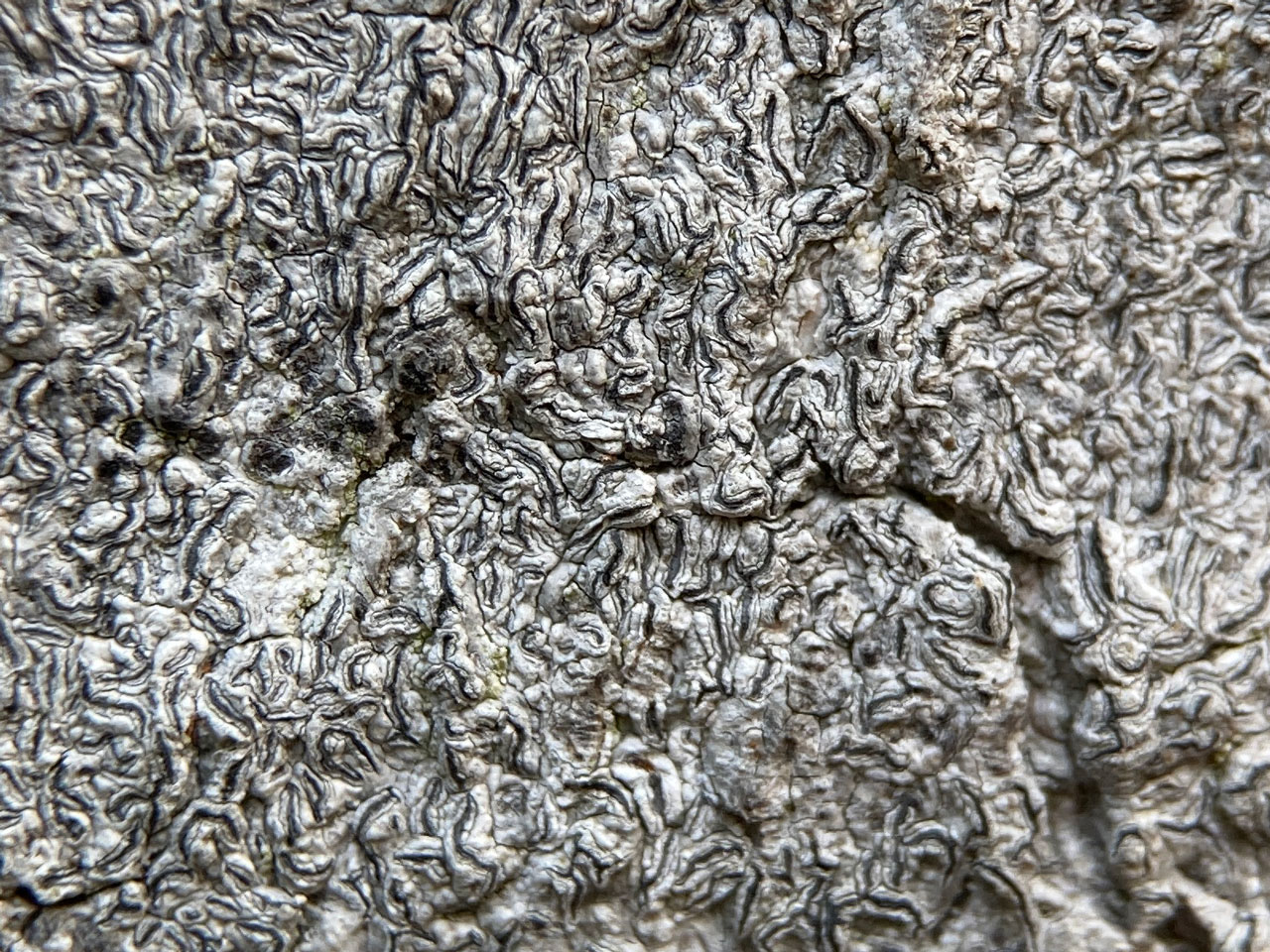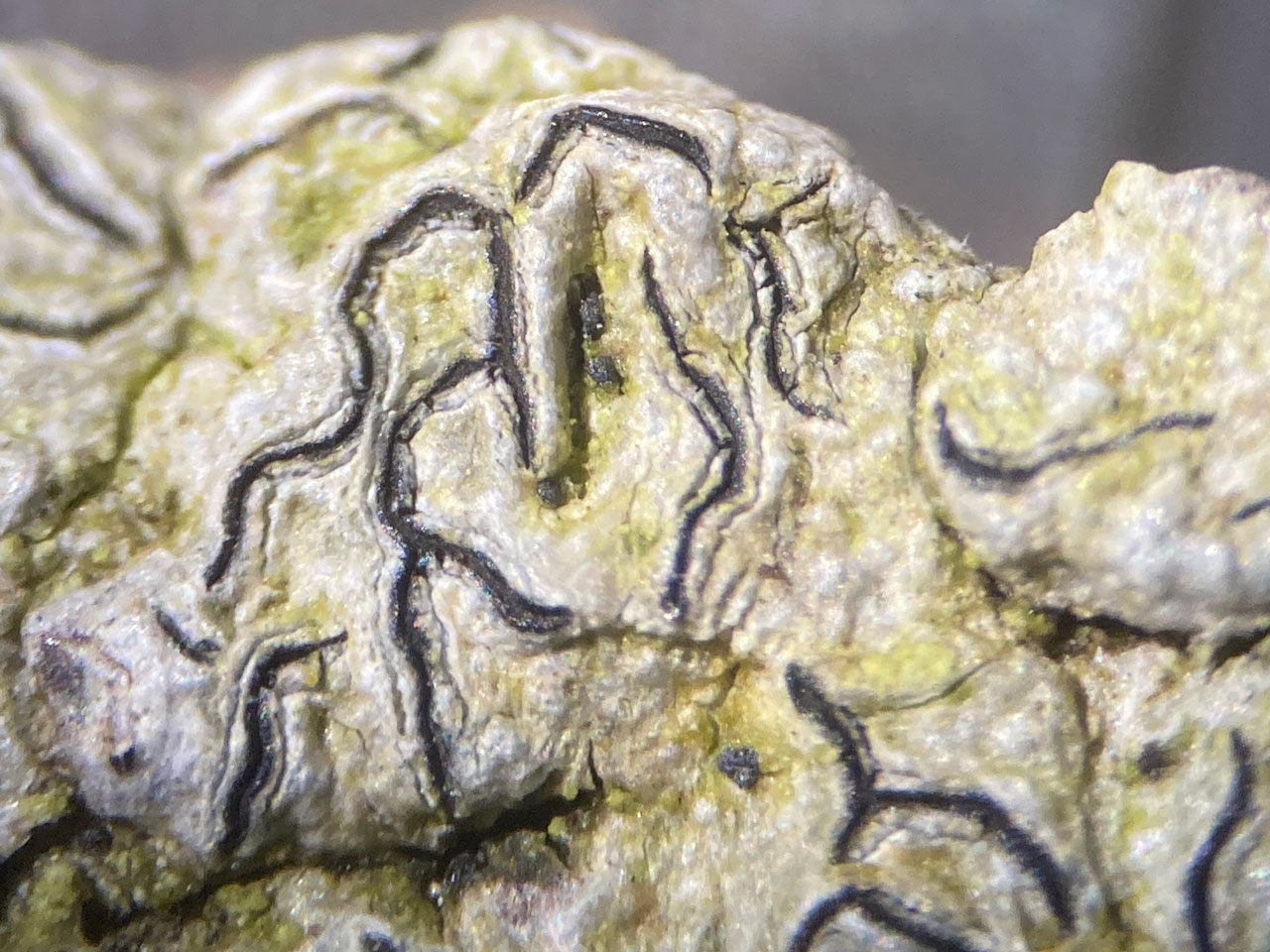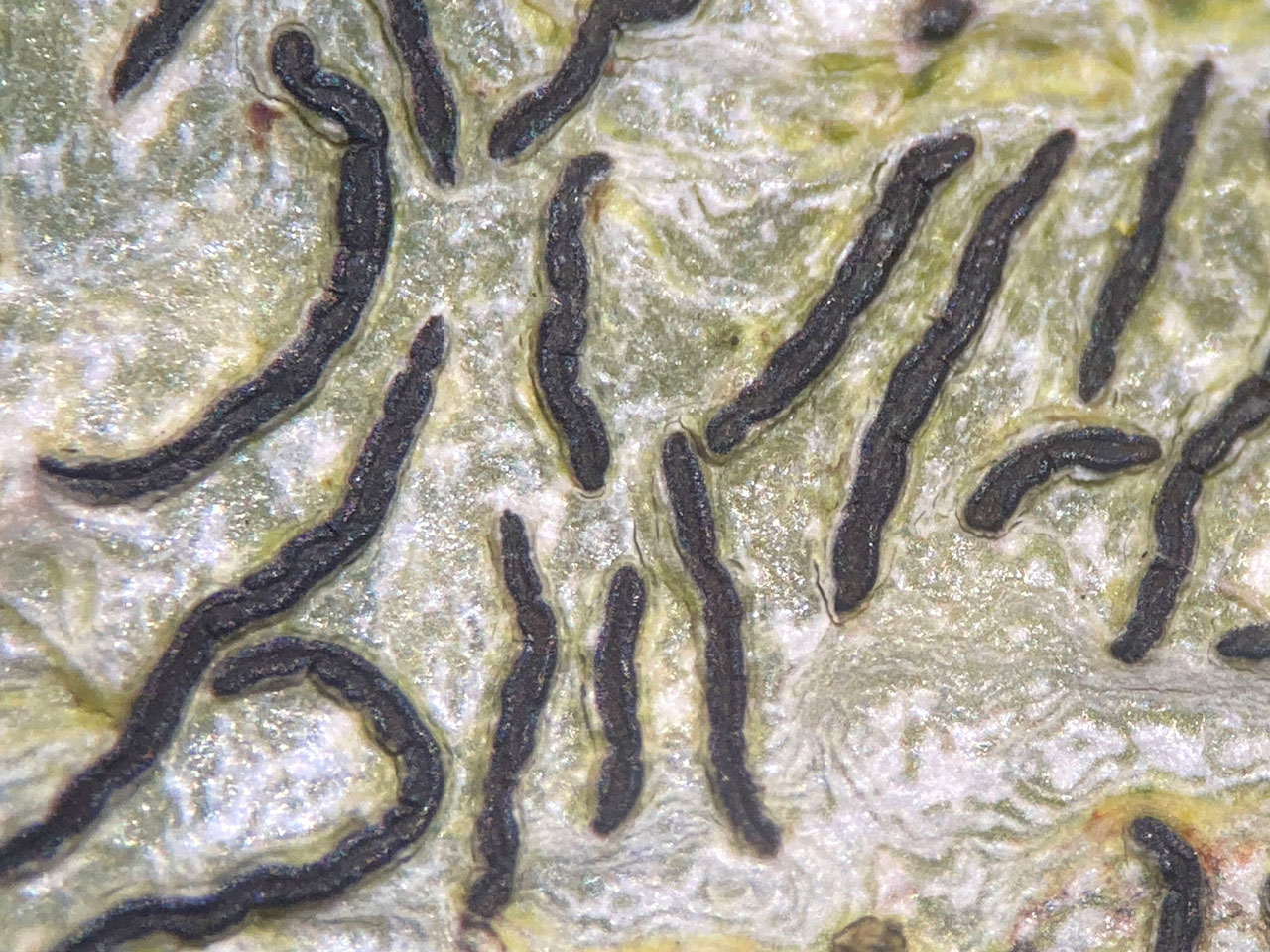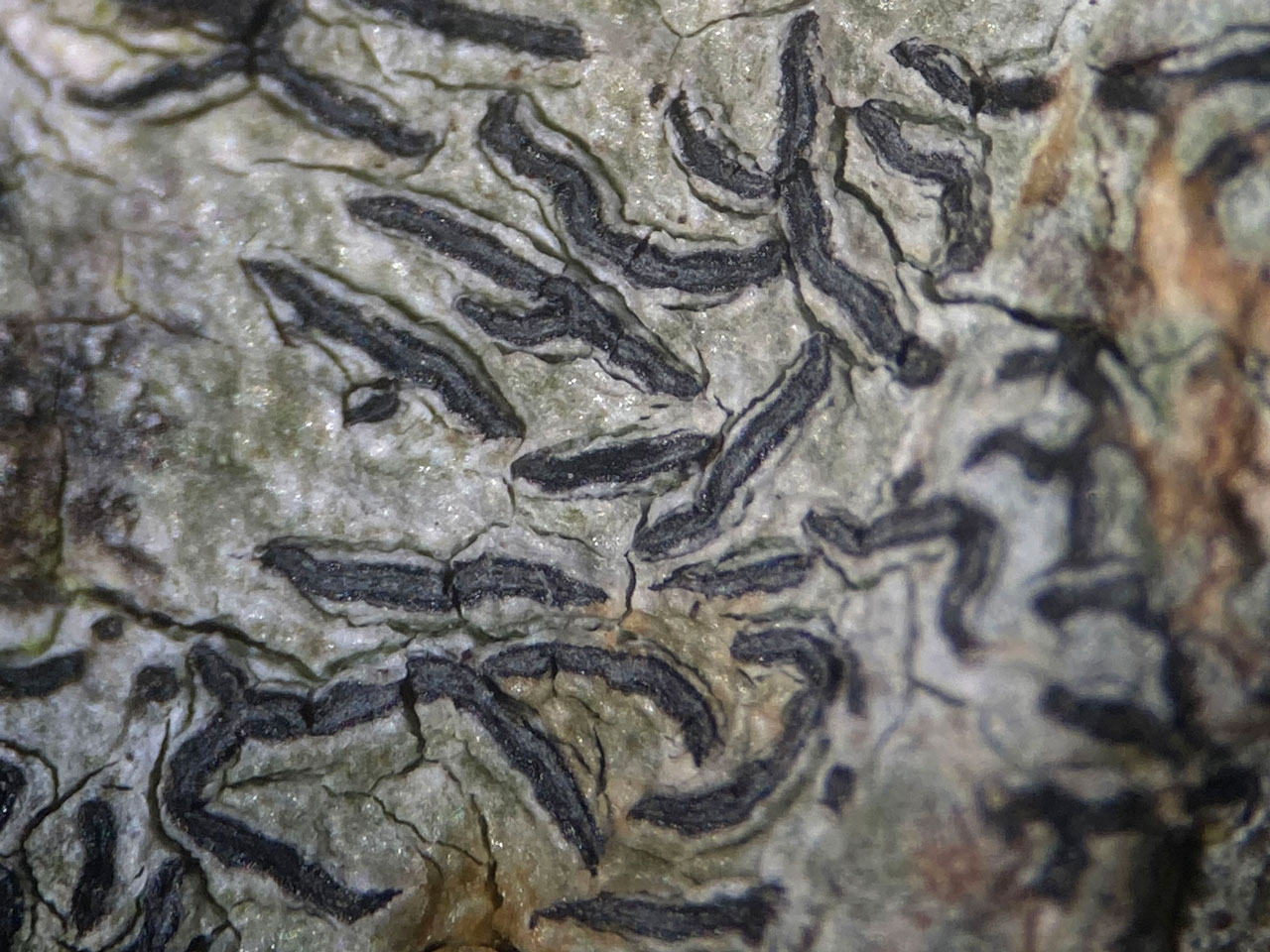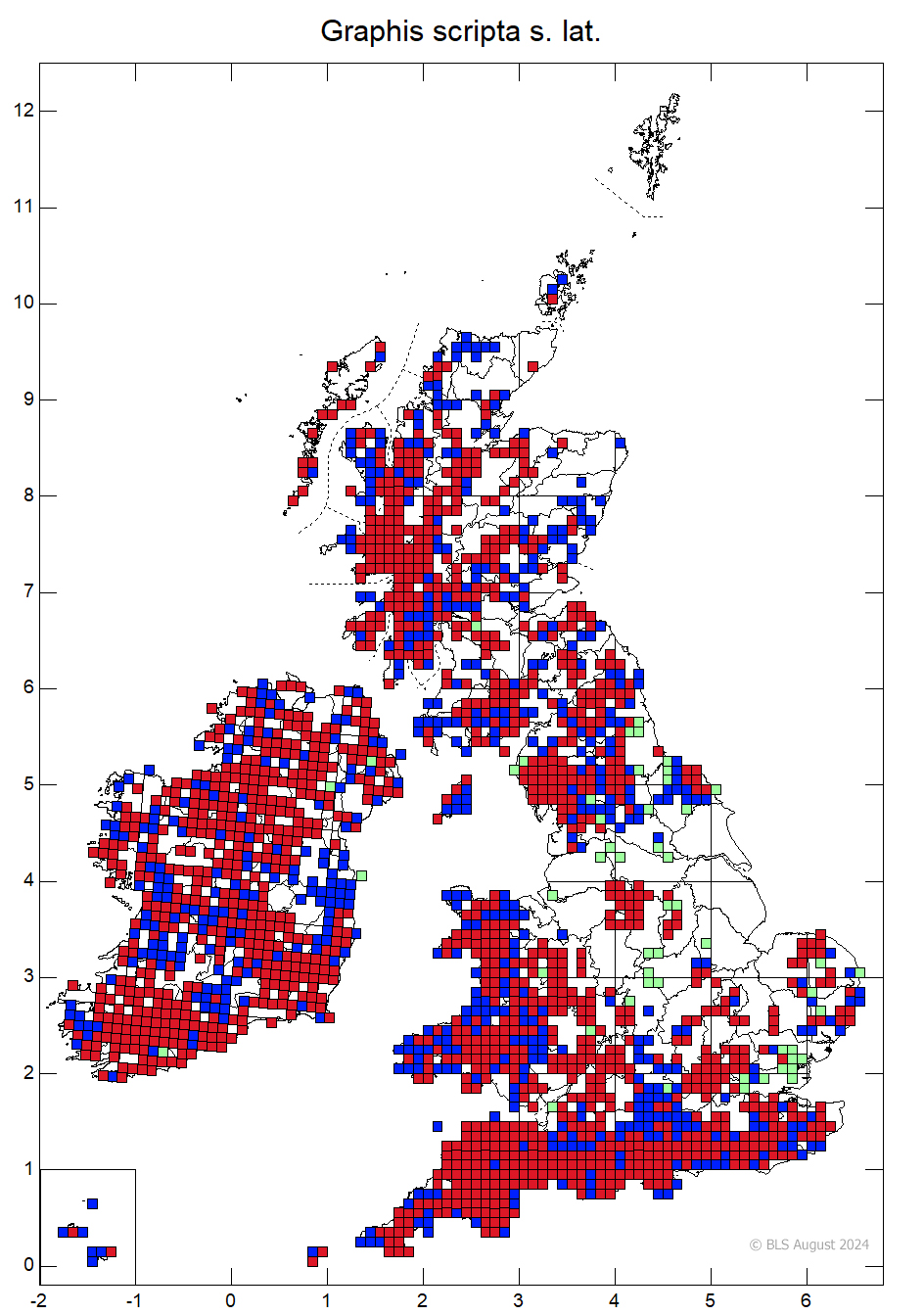Graphis scripta s. lat.
This very familiar and common, if variable, script lichen has recently been revised to be a species complex and all four recognised species occur in our area (Graphis betulina, Graphis persoonii, Graphis pulverulenta and Graphis scripta s. str.). The species can be distinguished morphologically with care and photos and a key of the four species included within Graphis scripta s. lat. are given on this page.
Thallus smooth or slightly uneven, whitish green to green-grey or yellowish. Apothecia unbranched or branched, elongate, 5–25 × 1–2 mm; true exciple black, not furrowed; disc narrow, erumpent, exposed even when dry, ± whitish pruinose. Ascospores 25–70 × 6–10 μm, 5- to 15-septate, fusiform-cylindrical. Pycnidia rare; conidia 2–5 × ca 1 μm. Lichen products not detected by TLC.
Considered to be a species complex (see Neuwirth & Aptroot 2011, Kraichak et al. 2015), and all four recognised species occur in our area (see Graphis betulina, Graphis persoonii, Graphis pulverulenta and Graphis scripta s. str.). The species can be distinguished morphologically and phylogenetically. British material has been examined and all species were present in the past and are still present, although they are not equally common. Two or three different species frequently co-occur on one tree. Young specimens are difficult to identify but most mature specimens and most specimens in dried collections can be assigned to one or other of the species without too much trouble. However, damp specimens cannot be identified in the field, especially as the disks of Graphis scripta s. str. open wide when damp (but are fully closed when dry). See the key for a summary of the differences between the species.
The lirellae of G. elegans and G. scripta s. lat. are extremely variable in shape, from short, deeply immersed and simple, to well-developed and serpentine or in stellate clusters; on young bark the apothecia tend to be ± parallel to the circumference of the branches, growing most rapidly in the direction that the bark is expanding. G. inustuloides has a white thalline rim round the lirellae (but see G. betulina) and muriform spores.
Key
1 Discs not, or hardly, visible, nearly concealed by the labia; with or without a narrow thallus margin to 0.1 mm broad; ascospore lumina elliptical, lentiform or rarely irregular, interlocular plates I+ blue …… Graphis scripta s.str.
Discs, at least in the centre, visible or widely open …… 2
2 (1) Discs not pruinose, dark brown; ends of apothecia rounded; ascospore lumina elliptical to lentiform…… Graphis persoonii
Discs pruinose or not; ends of apothecia branched and acute; ascospore lumina mostly lentiform …… 3
3 (2) Discs grey- to white-pruinose, widely open; lirellae 0.15– 0.4 mm broad; thallus margin narrow, to 0.1 mm thick; ascospores constricted at the septa …… Graphis pulverulenta
Discs not or rarely grey-pruinose; apothecia with a conspicuous thick white thallus margin ca 0.2 mm thick, often raised from the thallus or embedded; ascospores not constricted at the septa …… Graphis betulina
On moderately shaded, smooth bark of a wide range of trees.

Throughout Britain and Ireland, a relict in ancient woodlands of the Midlands.
Aptroot, A., Weerakoon, G., Cannon, P., Coppins, B., Sanderson, N. & Simkin, J. (2023). Ostropales: Graphidaceae, including the genera Allographa, Clandestinotrema, Crutarndina, Diploschistes, Fissurina, Graphis, Leucodecton, Phaeographis, Schizotrema, Thelotrema and Topeliopsis. Revisions of British and Irish Lichens 36: 1-23.
Kraichak, E., Lücking, R., Aptroot, A., Dornes, P., John, V., Lendemer, J.C., Nelsen, M.P., Neuwirth, G., Nutakki, A., Parnmen, S., Sohrabi, M., Tønsberg, T. & Lumbsch, H.T. (2015). Hidden diversity in the morphologically variable script lichen (Graphis scripta) complex (Ascomycota, Ostropales, Graphidaceae). Organisms, Diversity and Evolution 15: 447-458.
Neuwirth, G. & Aptroot, A. (2011). Recognition of four morphologically distinct species in the Graphis scripta complex in Europe. Herzogia 24: 207–230.
Text by Neil A Sanderson based on Aptroot et al (2023)
